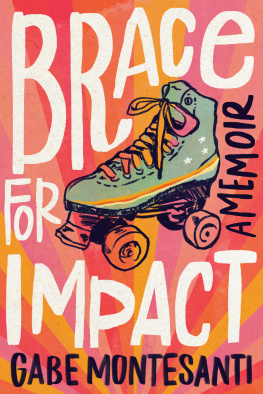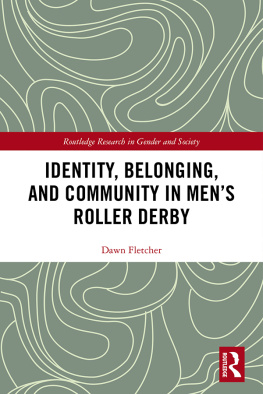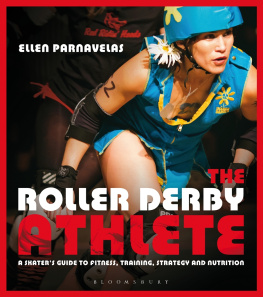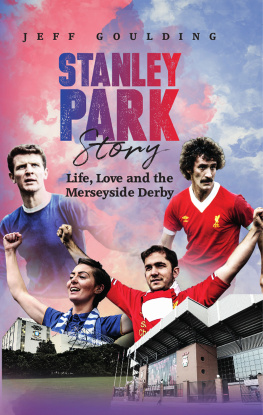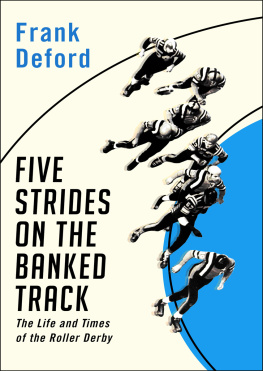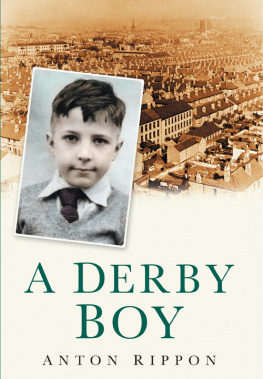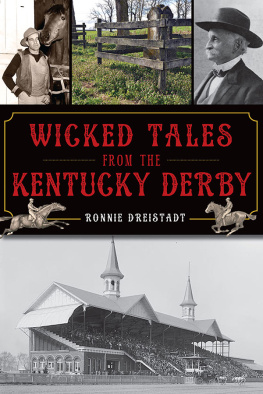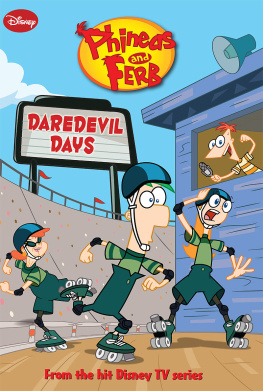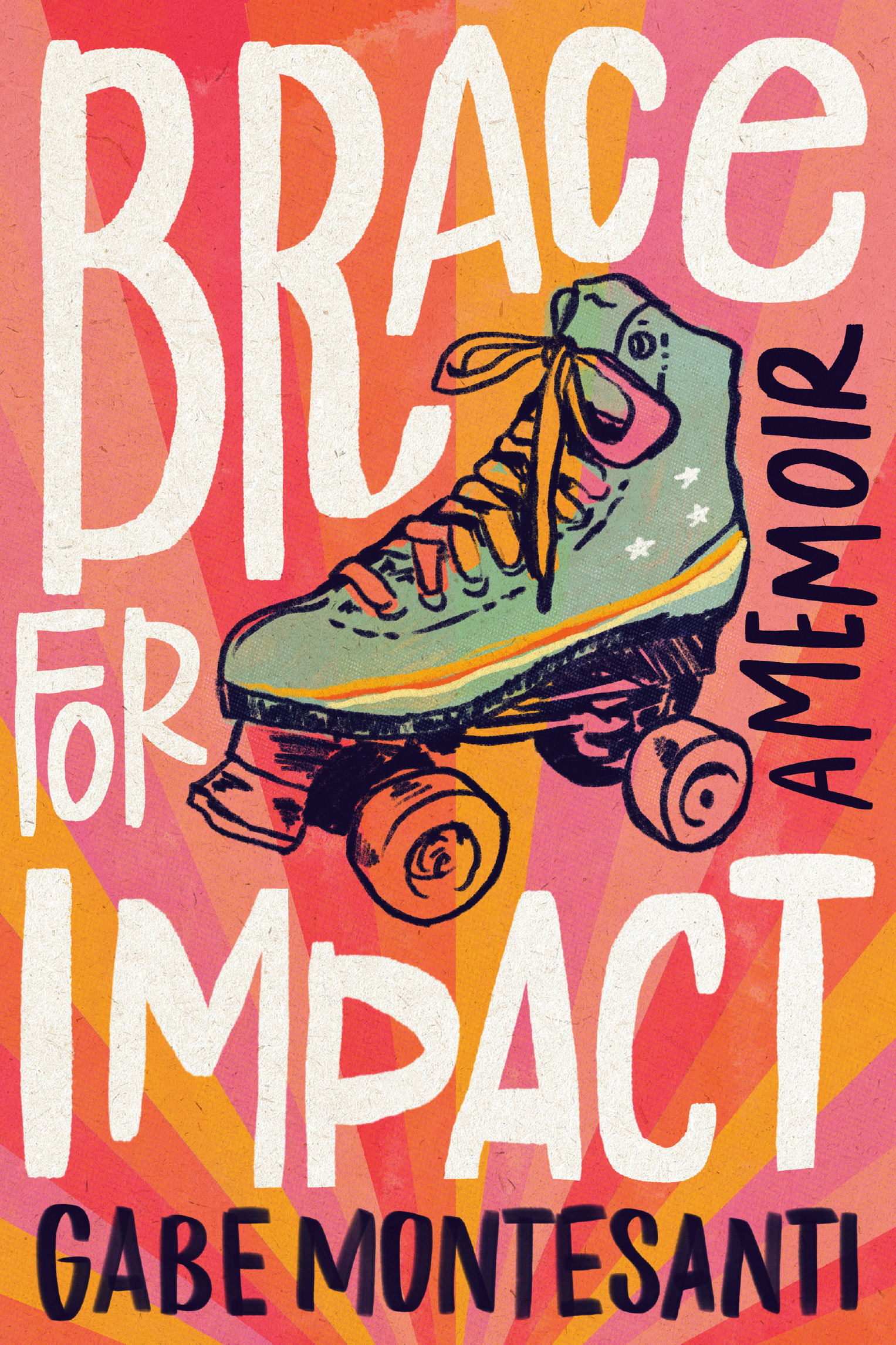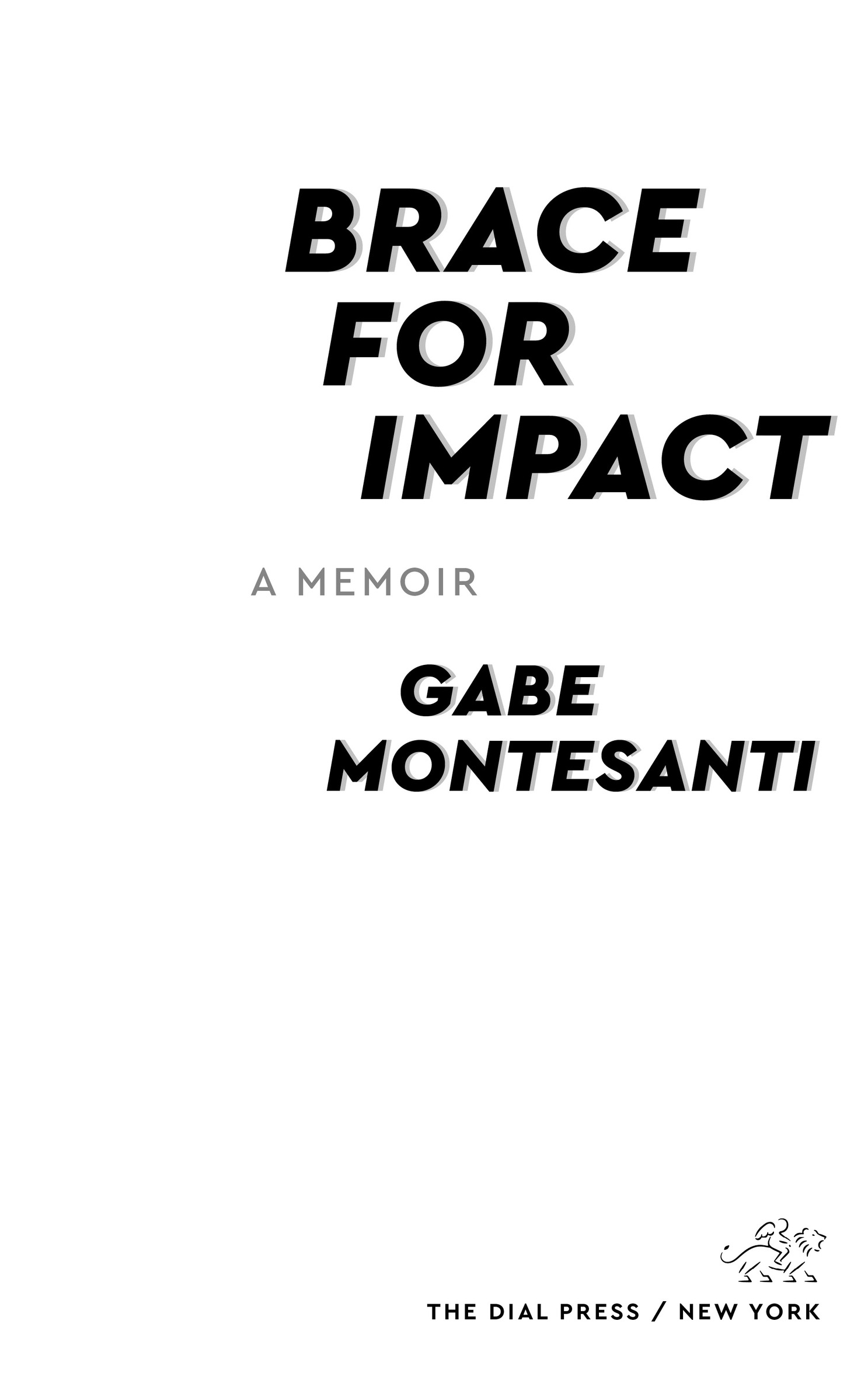Contents
Landmarks
Print Page List
Brace for Impact is a work of memoir. It is a true story faithfully based on the authors best recollections of various events in her life. In some instances, events and time periods have been compressed or reordered in service of the narrative and dialogue approximated to match the authors best recollections of those exchanges. Some names and identifying details of certain people mentioned in the book have been changed. Pronouns used are each individuals confirmed pronouns at the time of writing and otherwise default to they/them/theirs.
Copyright 2022 by Gabrielle Montesanti
All rights reserved.
Published in the United States by The Dial Press, an imprint of Random House, a division of Penguin Random House LLC, New York.
The Dial Press is a registered trademark and the colophon is a trademark of Penguin Random House LLC.
Portions of this work, sometimes in different form, were published in Boulevard Magazine, Brevity: A Journal of Concise Literary Nonfiction, Hobart, and Just Femme & Dandy.
Library of Congress Cataloging-in-Publication Data
Names: Montesanti, Gabe, author.
Title: Brace for impact: a memoir / Gabe Montesanti.
Description: First edition. | New York: The Dial Press, 2022.
Identifiers: LCCN 2021016592 (print) | LCCN 2021016593 (ebook) | ISBN 9780593241370 (hardcover) | ISBN 9780593241387 (ebook)
Subjects: LCSH: Montesanti, Gabe. | Women roller skatersUnited StatesBiography. | LesbiansUnited StatesBiography. | Psychologically abused childrenUnited StatesBiography. | Sports injuriesPatientsUnited StatesBiography. | Roller derbySocial aspectsUnited States.
Classification: LCC GV858.22.M66 A3 2022 (print) | LCC GV858.22.M66 (ebook) | DDC 796.21092 [B]dc23
LC record available at lccn.loc.gov/2021016592
LC ebook record available at lccn.loc.gov/2021016593
Ebook ISBN9780593241387
randomhousebooks.com
Cover design: Cassie Gonzales
Cover image (skate): jumpingsack/Shutterstock
ep_prh_6.0_140076052_c0_r1
Contents

1/
RECRUIT NIGHT
From the outside, the St. Louis Skatium seemed just as abandoned as the surrounding buildings. The strip looked like a stage set, all peeling paint and muted colors. There was a FOR LEASE sign hanging crookedly in the window of Kleb Clothing and Shoe Company; both the neighboring storefronts were boarded up. The BUSCH BEER sign hanging from an empty bar was coated in rust and cobwebs. Beside Tuckers Bar & Grill, two old men wearing overalls and yellow gloves were rooting through a dumpster.
Kelly and I surveyed the roller rink from our old Corolla. We had never been to South City before and had no idea what to expect. The buildings exterior, a flat, white faade with dull red accents, held no indication we had come to the right place. Im not sure what I was expecting: something that looked more like the roller rinks of my childhood, perhaps. Kid-friendly graphics painted in bright colors on the walls. A tall roller skate with wings displayed on the roof. A sign wouldve helped me feel less intimidated ROLLER DERBY RECRUIT NIGHT OR FUTURE SKATERS ENTER HERE . Even HOME OF ARCH RIVAL ROLLER DERBY would have put me at ease; instead, there was only HAP Y BIR HD Y JULIA , the missing letters all resting upside down at the bottom of the plastic showcase.
Are you nervous? Kelly asked. Because Im not even interested in derby and Im nervous for you.
Nah, I lied. Then I said, We should probably go in. But neither of us made a move.
When I was fifteen, my dad took me and my sister, Cam, on a tour of all the places he and my mother used to frequent in the early days of their relationship. We were in Denver visiting my dads parents; perhaps the absence of my mother, who had stayed home in Michigan, allowed us to experience a rare collective feeling of missing, even romanticizing, her presence. First, we drove past the Grease Monkey, where my parents had first met. Mom came in for an oil change and Dad was her mechanic; we dont know exactly what happened after that, but my sister and I loved to speculate about the initial attraction. Was it her dark eyes? His crooked smile? It was hard to imagine a time when they might have been passionate with each other. Although they stayed married, the sole affection we saw between them was a quick kiss in church before Communion. The only detail I know for certain about that time is that my dad couldnt drive my mom on dates because his license had been revoked for drag racing. This was a particularly juicy piece of intel: his youthful recklessness, his passion. I was proud of him, in a twisted kind of way, for getting in trouble, since it was so uncharacteristic of the quiet, pious man I knew him to be.
When we pulled up to the house they lived in when I was born, we didnt get out of the car. I wondered if Id have an emotional connection to the house, but when I looked at it, I felt nothing at all. The roof was flat as a ballroom; it was essentially a small box on a shady corner of two unremarkable streets.
Thats it? Cam asked. Even at ten, she was hard to impress.
Dad tapped on the steering wheel absentmindedly. I could tell he was toying with the idea of knocking on the door and asking the current occupants if we could take a look around.
Itd be nice to show you your old room, he said. There was a pause; the car was still running.
I understood my dads apprehension. If we knocked, we might be able to go inbut wed also face the possibility of rejection; whoever opened the door would have all the power. My dad pushed open the glove compartment, removed a yellow cloth, and began wiping down the dashboard, which he always did when he was nervous. Maybe the thought of being inside our old home was frightening to him, I remember thinking. What if it looked completely different? What if it looked the same, and flooded him with memories of a time when our family hadnt yet done so much damage to each other?
Are we going in or what? Cam asked. I cringed, wishing she had let my dad linger in the possibility a bit longer. Her question seemed to snap him out of his reverie. We sat for a moment longer, then drove off. We never spoke about it again.
LETS GO, I told Kelly, and got out of the car.
The walk up to the Skatium was flanked by a black chain-link fence blocking off a neighboring bus station. In places, the chain had broken away from the poles anchoring it to the ground, and it had twisted up toward the sky. Several men in navy blue jumpsuits on the other side of the fence were smoking cigarettes and laughing.
The air was thick and wet inside the Skatium. We had to push through a cloud of pot smoke to fully enter; the stink of weed tangled with that of body odor. On the track were purple benches arranged campfire-style around a cooler of beer. About a dozen people, who I presumed to be other recruits, were already perched there chatting. They ran the gamut in terms of age and appearance; I felt curious about what had brought everyone here.
Stepping onto the track to join them was daunting; the surface was white, and for a brief instant I mistook it for ice. In some places, the wood had been stripped. In others, the track was warped and uneven. Small beams of light were shining onto the Skatium floor, reminding me of mornings in my childhood parish when the crucifix was perfectly illuminated. But unlike at church, where big windows were the source of light, the light flooding the Skatium was the result of holes in the roof. The ceiling was skeletalbarnlike, with crisscrossing wooden beams. Buckets, half-filled with rainwater, dangled from the rafters, and a disco ball hung in the center.

